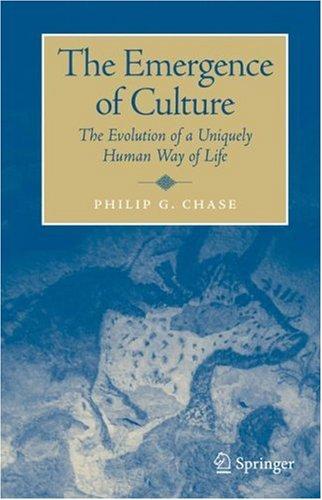218 pages
English language
Published by Springer.

218 pages
English language
Published by Springer.
Paleolithic archaeologists and human paleontologists have failed to address the origins of a phenomenon that is both absolutely central to the human way of life and unique to our species.
In all species of mammals, there are codes (rules, concepts, values, etc.) that govern behavior. Among humans, and only among humans, some of these codes are created socially, through interactions among individuals. Human culture is thus an emergent phenomenon, one that cannot be understood without taking into account the interactions among individuals. Other species may learn codes socially, from their parents or other members of their species, but the codes are not created socially.
Because human society creates the culture that governs individual behavior, it can control individual members in a way that other primate societies cannot. Culture can facilitate cooperative and group activities, but can also lead individuals to behave contrary to their own evolutionary best interests.
This book …
Paleolithic archaeologists and human paleontologists have failed to address the origins of a phenomenon that is both absolutely central to the human way of life and unique to our species.
In all species of mammals, there are codes (rules, concepts, values, etc.) that govern behavior. Among humans, and only among humans, some of these codes are created socially, through interactions among individuals. Human culture is thus an emergent phenomenon, one that cannot be understood without taking into account the interactions among individuals. Other species may learn codes socially, from their parents or other members of their species, but the codes are not created socially.
Because human society creates the culture that governs individual behavior, it can control individual members in a way that other primate societies cannot. Culture can facilitate cooperative and group activities, but can also lead individuals to behave contrary to their own evolutionary best interests.
This book describes the emergent nature of human culture. It proposes hypotheses to explain how a phenomenon that is potentially maladaptive for individuals could have evolved, and to explain why culture plays such a pervasive role in human life. It then reviews the primatological, fossil, and archaeological data to test these hypotheses.